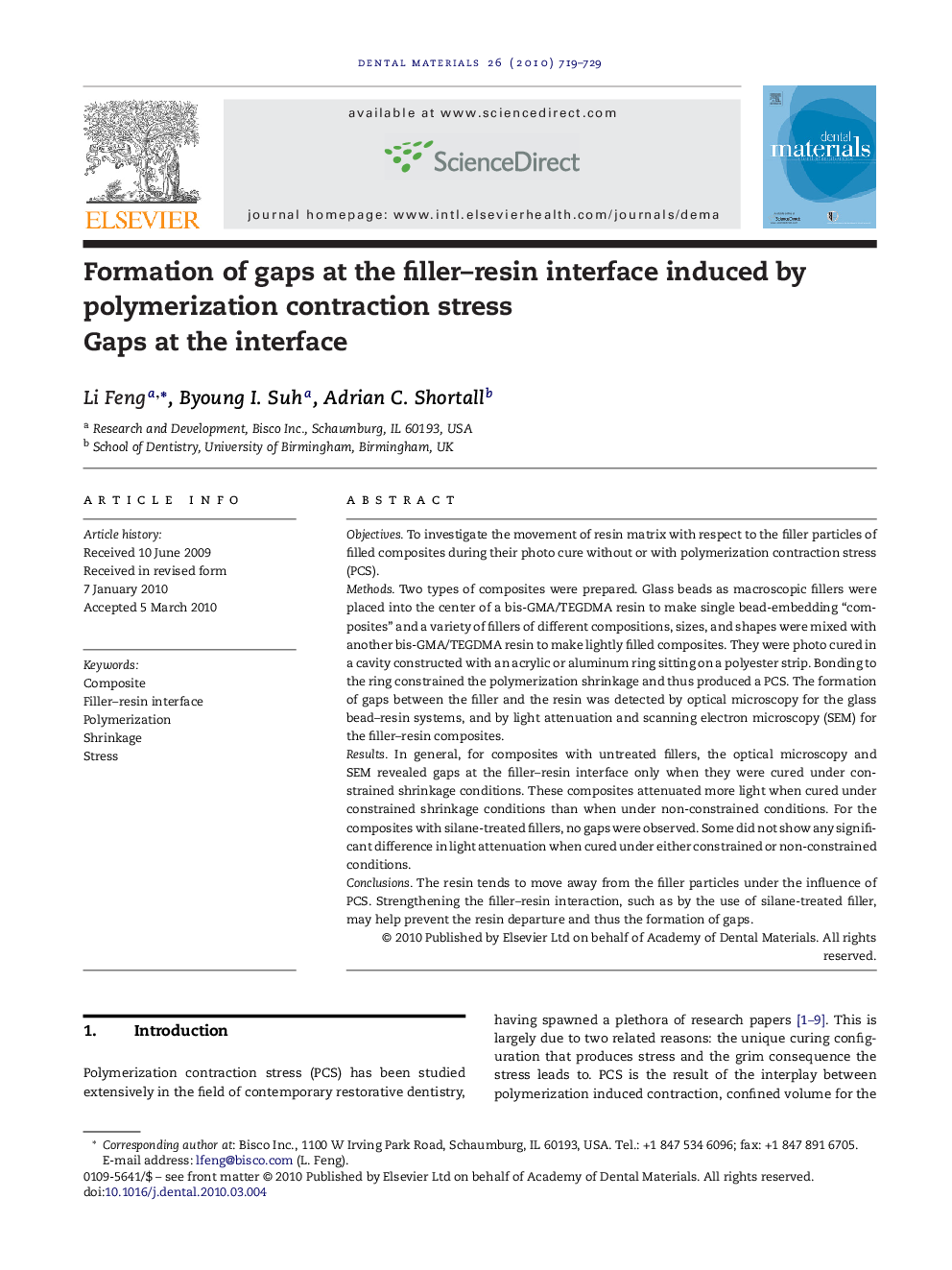| کد مقاله | کد نشریه | سال انتشار | مقاله انگلیسی | نسخه تمام متن |
|---|---|---|---|---|
| 1421526 | 986417 | 2010 | 11 صفحه PDF | دانلود رایگان |

ObjectivesTo investigate the movement of resin matrix with respect to the filler particles of filled composites during their photo cure without or with polymerization contraction stress (PCS).MethodsTwo types of composites were prepared. Glass beads as macroscopic fillers were placed into the center of a bis-GMA/TEGDMA resin to make single bead-embedding “composites” and a variety of fillers of different compositions, sizes, and shapes were mixed with another bis-GMA/TEGDMA resin to make lightly filled composites. They were photo cured in a cavity constructed with an acrylic or aluminum ring sitting on a polyester strip. Bonding to the ring constrained the polymerization shrinkage and thus produced a PCS. The formation of gaps between the filler and the resin was detected by optical microscopy for the glass bead–resin systems, and by light attenuation and scanning electron microscopy (SEM) for the filler–resin composites.ResultsIn general, for composites with untreated fillers, the optical microscopy and SEM revealed gaps at the filler–resin interface only when they were cured under constrained shrinkage conditions. These composites attenuated more light when cured under constrained shrinkage conditions than when under non-constrained conditions. For the composites with silane-treated fillers, no gaps were observed. Some did not show any significant difference in light attenuation when cured under either constrained or non-constrained conditions.ConclusionsThe resin tends to move away from the filler particles under the influence of PCS. Strengthening the filler–resin interaction, such as by the use of silane-treated filler, may help prevent the resin departure and thus the formation of gaps.
Journal: Dental Materials - Volume 26, Issue 8, August 2010, Pages 719–729